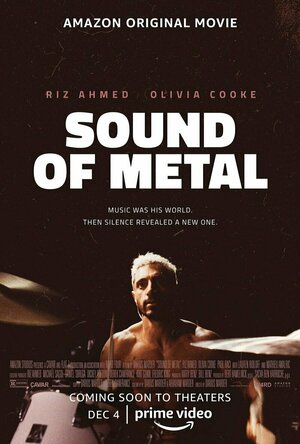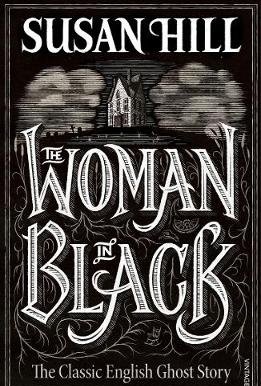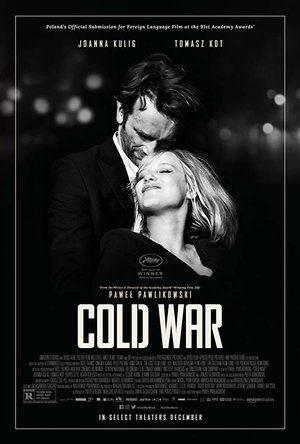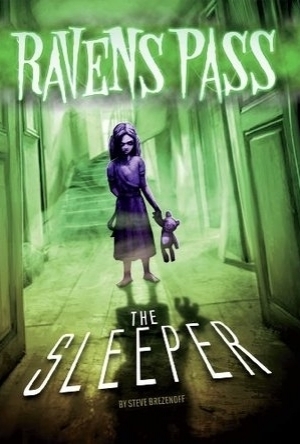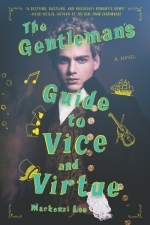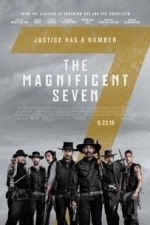Search
Search results
Bob Mann (459 KP) rated Sound of Metal (2019) in Movies
Apr 13, 2021
Acting by Riz Ahmed, Paul Raci AND Olivia Cooke (2 more)
Wonderful story: show not tell!
Sound design is simply epic
When I was young, I remember being scared to death by an old black and white movie about a woman who went blind.... I remember she was travelling on a bus and the movie simulated the view through her eyes as her vision dimmed and then went black. (I've googled this without joy, so can't place the movie!) I found the concept of suddenly losing one of your key senses to be utterly terrifying. So, I was fully engaged with Ruben's issues in this movie.
I thought the movie was going to be downbeat and depressing. But, both with it's positive portrayal of the deaf community and with the extraordinary ending, I found it to be a wonderfully heart-warming tale.
Positives:
- There is just SOOO much depth to this story: a character torn from his familiar world and struggling to adapt to the changes. It's fundamentally a movie about acceptance of self. The last two minutes of the screen time are momentous: one of the best endings of a movie I can remember in recent memory. A truly religious experience.
- "Sound of Metal" won the BAFTA at the weekend for Sound, and deservedly so. It's another leading character in the film, with the editing deftly weaving between the soundscape that most of us live in and Ruben's perception. Apparently, the sound team used a hyper-sensitive microphone in Ahmed's mouth to pick up the inner noises of his body.
- Both Riz Ahmed and Paul Raci are nominated for Oscars. Simply stunning performances from both of them.
- Although not nominated, I'd lob Olivia Cooke's name into that frame too. It's almost IMPOSSIBLE to see the same actress who played "Pixie" in the body of Lou. It's a transformation akin to Charlize Theron's in "Monster". (In fact, it took me until the Paris scenes to actually recognize her!)
- Director Darius Marder - IN HIS DIRECTORIAL FEATURE DEBUT! - delivers a fabulous example of "show not tell". All of the detail is present in the film to tell the story if you look for it. You don't need dialogue to give Lou's backstory: just a casual shot of her lower arm is enough.
Negatives:
- It's a VERY minor quibble but, with a 2 hour running length, the Paris scenes dragged just a little for me. I might have chosen to do a few nips and tucks there in the 'party' scenes. But I wouldn't have wanted to lose much.
"Sound of Metal" has - I'm sure - a guaranteed slot in my Films of the Year list. Simply stunning and highly recommended, this is currently showing in the UK on Amazon Prime.
(For the full graphical review, please check out the One Mann's Movies review here - https://bob-the-movie-man.com/2021/04/13/sound-of-metal-dont-ignore-that-ear-bud-volume-warning-on-your-phone-kids/ )
I thought the movie was going to be downbeat and depressing. But, both with it's positive portrayal of the deaf community and with the extraordinary ending, I found it to be a wonderfully heart-warming tale.
Positives:
- There is just SOOO much depth to this story: a character torn from his familiar world and struggling to adapt to the changes. It's fundamentally a movie about acceptance of self. The last two minutes of the screen time are momentous: one of the best endings of a movie I can remember in recent memory. A truly religious experience.
- "Sound of Metal" won the BAFTA at the weekend for Sound, and deservedly so. It's another leading character in the film, with the editing deftly weaving between the soundscape that most of us live in and Ruben's perception. Apparently, the sound team used a hyper-sensitive microphone in Ahmed's mouth to pick up the inner noises of his body.
- Both Riz Ahmed and Paul Raci are nominated for Oscars. Simply stunning performances from both of them.
- Although not nominated, I'd lob Olivia Cooke's name into that frame too. It's almost IMPOSSIBLE to see the same actress who played "Pixie" in the body of Lou. It's a transformation akin to Charlize Theron's in "Monster". (In fact, it took me until the Paris scenes to actually recognize her!)
- Director Darius Marder - IN HIS DIRECTORIAL FEATURE DEBUT! - delivers a fabulous example of "show not tell". All of the detail is present in the film to tell the story if you look for it. You don't need dialogue to give Lou's backstory: just a casual shot of her lower arm is enough.
Negatives:
- It's a VERY minor quibble but, with a 2 hour running length, the Paris scenes dragged just a little for me. I might have chosen to do a few nips and tucks there in the 'party' scenes. But I wouldn't have wanted to lose much.
"Sound of Metal" has - I'm sure - a guaranteed slot in my Films of the Year list. Simply stunning and highly recommended, this is currently showing in the UK on Amazon Prime.
(For the full graphical review, please check out the One Mann's Movies review here - https://bob-the-movie-man.com/2021/04/13/sound-of-metal-dont-ignore-that-ear-bud-volume-warning-on-your-phone-kids/ )
Hadley (567 KP) rated The Woman in Black in Books
Jan 1, 2020
Great paranormal aspect (1 more)
Good narrative
Overuse of some words (1 more)
Some scenes that could have been written better
In Susan Hill's novel, "The Woman in Black," she puts a small twist on an urban legend that is widely known to most - - - 'the lady in white,' which if you haven't heard of it, it's a spectral woman that is seen throughout the world, dressed all in white, only to show up in places of tragic events. This novel only has one main character, Arthur Kipps, a 23-year-old young man who is a lawyer in late 1800's England. He usually takes care of the conveyance of property leases, but one day, when his boss, Mr. Bentley, hands over a case and responsibility of finding a newly deceased's Last Will and Testament for their lawfirm, Kipp graciously accepts the new adventure without knowing that what is ahead will haunt him the rest of his life.
As Kipp soon finds out after traveling to the town just outside of the deceased's home, there is more to this woman, Alice Drablow, than just an old hermit- - - anytime her name is mentioned, people fall silent; the same goes for her home: Eel Marsh House. Kipp doesn't allow this to put him off from doing his job, but when he finds out about the marshes the house lives on, he is told that there are only certain times of the day that he can cross before the marshes become too flooded to cross. 'The Woman in Black' has spine-chilling moments and great descriptive details to make this a quick ghost story to be enjoyed.
Before Kipp heads off to the Eel Marsh House, he must attend Mrs. Drablow's funeral; he is accompanied by a man named Mr. Jerome, an agent that had dealt with Mrs. Drablow's property and land business while she was alive. While at the church, only one other person turns up for the funeral: a woman dressed all in black. Kipp takes note that this woman does not look well and, being the gentleman that he is, tells himself that he will offer his arm to her for stability after the funeral, but when they are leaving the church yard, the woman is suddenly gone. Kipp brings this up to Mr. Jerome, but he merely states that they were the only ones at the funeral.
The best scene to come is Kipp's first night at Eel Marsh House, where he experiences his first real scare in the ruins close by the house that is a dilapidated cemetery. " Suddenly conscious of the cold and the extreme bleakness and eeriness of the spot and of the gathering dusk of the November afternoon, and not wanting my spirits to become so depressed that I might begin to be affected by all sorts of morbid fancies, I was about to leave, and walk briskly back to the house, where I intended to switch on a good many lights and even light a small fire if it were possible, before beginning my preliminary work on Mrs. Drablow's papers. But, as I turned away, I glanced once again round the burial ground and then I saw again the woman with the wasted face, who had been at Mrs. Drablow's funeral. She was at the far end of the plot, close to one of the few upright headstones, and she wore the same clothing and bonnet, but it seemed to have slipped back so that I could make out her face a little more clearly. "
Over the entire course of the book, Kipp only visits the house one more time after this incident. The book has a good story, but it isn't flawless; first, there is the overuse of the word 'estuary,' which is practically used on every page whenever Kipp is at the Eel Marsh House or discussing it. It gets very tiresome. There is also instances of bad writing, where I feel that Hill could have delivered the scenes better than she did: Kipp changing his mind the very next sentence (if you read my reviews pretty regularly, you will realize that I can't stand it when a character contradicts themselves within a page or two), and then Kipp saying he can't do something, than directly after, does it. When you read this book, you will realize that Kipp is not the type of character that would change his mind on a whim.
Kipp is also an interesting character for a male set in this era. Most men in the late 1800's were stoic and refused to show an ounce of emotion in public, but Kipp is not afraid to have other men see him fall apart, and he is also very considerate of other people. There isn't much of a backstory on where Kipp came from or how his parents raised him, but it wasn't really needed for this story. Yet, we meet Kipp's step-children and his first and second wife, without too much of a story about them, so when certain things happen (to not give a spoiler), it doesn't really leave an impression.
There isn't much I can say that wouldn't give away what makes this story enjoyable to read. Overall, this is a good and quick ghost story that may cause shivers for some, but even if it doesn't, the Woman in Black is a must-read for lovers of the paranormal. To me, this seems like a good book to read while traveling because it's easy to pick up and set down without getting lost as to what was going on.
As Kipp soon finds out after traveling to the town just outside of the deceased's home, there is more to this woman, Alice Drablow, than just an old hermit- - - anytime her name is mentioned, people fall silent; the same goes for her home: Eel Marsh House. Kipp doesn't allow this to put him off from doing his job, but when he finds out about the marshes the house lives on, he is told that there are only certain times of the day that he can cross before the marshes become too flooded to cross. 'The Woman in Black' has spine-chilling moments and great descriptive details to make this a quick ghost story to be enjoyed.
Before Kipp heads off to the Eel Marsh House, he must attend Mrs. Drablow's funeral; he is accompanied by a man named Mr. Jerome, an agent that had dealt with Mrs. Drablow's property and land business while she was alive. While at the church, only one other person turns up for the funeral: a woman dressed all in black. Kipp takes note that this woman does not look well and, being the gentleman that he is, tells himself that he will offer his arm to her for stability after the funeral, but when they are leaving the church yard, the woman is suddenly gone. Kipp brings this up to Mr. Jerome, but he merely states that they were the only ones at the funeral.
The best scene to come is Kipp's first night at Eel Marsh House, where he experiences his first real scare in the ruins close by the house that is a dilapidated cemetery. " Suddenly conscious of the cold and the extreme bleakness and eeriness of the spot and of the gathering dusk of the November afternoon, and not wanting my spirits to become so depressed that I might begin to be affected by all sorts of morbid fancies, I was about to leave, and walk briskly back to the house, where I intended to switch on a good many lights and even light a small fire if it were possible, before beginning my preliminary work on Mrs. Drablow's papers. But, as I turned away, I glanced once again round the burial ground and then I saw again the woman with the wasted face, who had been at Mrs. Drablow's funeral. She was at the far end of the plot, close to one of the few upright headstones, and she wore the same clothing and bonnet, but it seemed to have slipped back so that I could make out her face a little more clearly. "
Over the entire course of the book, Kipp only visits the house one more time after this incident. The book has a good story, but it isn't flawless; first, there is the overuse of the word 'estuary,' which is practically used on every page whenever Kipp is at the Eel Marsh House or discussing it. It gets very tiresome. There is also instances of bad writing, where I feel that Hill could have delivered the scenes better than she did: Kipp changing his mind the very next sentence (if you read my reviews pretty regularly, you will realize that I can't stand it when a character contradicts themselves within a page or two), and then Kipp saying he can't do something, than directly after, does it. When you read this book, you will realize that Kipp is not the type of character that would change his mind on a whim.
Kipp is also an interesting character for a male set in this era. Most men in the late 1800's were stoic and refused to show an ounce of emotion in public, but Kipp is not afraid to have other men see him fall apart, and he is also very considerate of other people. There isn't much of a backstory on where Kipp came from or how his parents raised him, but it wasn't really needed for this story. Yet, we meet Kipp's step-children and his first and second wife, without too much of a story about them, so when certain things happen (to not give a spoiler), it doesn't really leave an impression.
There isn't much I can say that wouldn't give away what makes this story enjoyable to read. Overall, this is a good and quick ghost story that may cause shivers for some, but even if it doesn't, the Woman in Black is a must-read for lovers of the paranormal. To me, this seems like a good book to read while traveling because it's easy to pick up and set down without getting lost as to what was going on.
BankofMarquis (1832 KP) rated Cold War (2018) in Movies
Feb 15, 2019
A meditation on love
There are some movies that I can bang the review out the moment I leave the theater (for example, ANY movie starring Dwayne "The Rock" Johnson). There are other films that I need to sit with for a few days and sort out my feelings and thoughts about them. Such is the case with the Polish film COLD WAR.
I am an "Oscar completist" and, thus, needed to see this film, not because I am a big fan of foreign films or because I am culturally literate, but because the Director of this film, Pawel Pawlikowski, was nominated for an Oscar for Best Director.
And I'm glad I saw this film, for COLD WAR is a rich, thoughtful, meditation on love and sacrifice that is full of mood and emotion. This film was conceived, written and directed by Pawlikowski and it shows on the screen. There is much heart on display here. It is said that Pawlikowski patterned the two lead characters after the tumultuous relationship of his parents (he even gave them his parents name), so I gotta think there is some knowledge and depth to these characters and their situations that resonate.
I walked into this film not knowing much about the plot or characters and this actually worked in the favor of the film, so I won't say much about it now except to say that this film follows the characters Zula (Joanna Kulig) and Wiktor (Tomasz Kot) as they experience life and love in Poland in the years just following WWII, the "Cold War" years.
As far as the acting goes, both Kulig and Kot are strong and they share a rich chemistry with each other. The film crackled when these two personalities were on the screen together and didn't crackle when they weren't together, so that must say something for their performances. Anyone else on the screen is "fine" (read: forgettable) in service of the plot and the two leads.
But, make no mistake, this film is a Director's film and Pawlikowski deserves the Academy Award nomination he received. The scenes are lush, and very "European" (lots of shots of still objects with a single viola playing in the background). The film was shot in black and white and this really helps the "behind the Iron Curtain" feel of things.
This film was also nominated for Best Foreign Language Film, and I think it has a good shot for that award (Pawlikowski is, I feel, a long shot for his award). Which makes this film worth seeing, just know you are getting a Polish language film, centered on two characters, with lots of long, lingering "beauty" shots setting up environment and feel. Don't expect fast pacing and action.
Letter Grade: B+
7 1/2 (out of 10) stars and you can take that to the Bank(ofMarquis)
I am an "Oscar completist" and, thus, needed to see this film, not because I am a big fan of foreign films or because I am culturally literate, but because the Director of this film, Pawel Pawlikowski, was nominated for an Oscar for Best Director.
And I'm glad I saw this film, for COLD WAR is a rich, thoughtful, meditation on love and sacrifice that is full of mood and emotion. This film was conceived, written and directed by Pawlikowski and it shows on the screen. There is much heart on display here. It is said that Pawlikowski patterned the two lead characters after the tumultuous relationship of his parents (he even gave them his parents name), so I gotta think there is some knowledge and depth to these characters and their situations that resonate.
I walked into this film not knowing much about the plot or characters and this actually worked in the favor of the film, so I won't say much about it now except to say that this film follows the characters Zula (Joanna Kulig) and Wiktor (Tomasz Kot) as they experience life and love in Poland in the years just following WWII, the "Cold War" years.
As far as the acting goes, both Kulig and Kot are strong and they share a rich chemistry with each other. The film crackled when these two personalities were on the screen together and didn't crackle when they weren't together, so that must say something for their performances. Anyone else on the screen is "fine" (read: forgettable) in service of the plot and the two leads.
But, make no mistake, this film is a Director's film and Pawlikowski deserves the Academy Award nomination he received. The scenes are lush, and very "European" (lots of shots of still objects with a single viola playing in the background). The film was shot in black and white and this really helps the "behind the Iron Curtain" feel of things.
This film was also nominated for Best Foreign Language Film, and I think it has a good shot for that award (Pawlikowski is, I feel, a long shot for his award). Which makes this film worth seeing, just know you are getting a Polish language film, centered on two characters, with lots of long, lingering "beauty" shots setting up environment and feel. Don't expect fast pacing and action.
Letter Grade: B+
7 1/2 (out of 10) stars and you can take that to the Bank(ofMarquis)
Rachel King (13 KP) rated Sweet Chic: Stylish Treats to Dress Up for Any Occasion in Books
Feb 11, 2019
There are few pastimes that can compete with my love of books, but baking is one of them. The premise of this cookbook seemed rather unique, as it attempted to combine baking with fashion. There is even a delightful foreword by Isaac Mizrahi to further the theme. The author, Rachel Schifter Thebault, runs her own bakery, Tribeca Treats, out of New York City, and this is her debut cookbook.
The book opens with an explanation of Rachel's philosophy of baking. In the same way that a woman uses a little black dress as the foundation of her wardrobe, using accessories to dress it up or down, so too can a baker take a basic recipe for the base of a dessert and use simple alterations to create a complete "wardrobe" of desserts for any occasion. Chocolate chip cookie dough becomes white chocolate coconut cookies, oatmeal raisin cookies, snickerdoodles, or anything else a cook can dream up with a change in mix-ins. I used the oatmeal raisin cookie recipe and substituted in chocolate chips, cinnamon, and nutmeg, and they came out perfect!
The book is divided into three sections: Cookies, Cakes, and Confections. Each chapter in the three sections feature a basic recipe to build on, with names such as "The Crisp Oxford Shirt," "The A-Line Skirt," and "The Leather Jacket." Following the basic recipe of each chapter are several more example recipes of how to alter the base recipe to fit your needs. Vanilla Cake becomes Peanut Butter and Jelly Cupcakes, and Basic Tempered Chocolate becomes Cranberry Almond Bark.
The detail that Rachel goes into is also quite impressive. The beginning of the book teaches the basics of baked goods by reviewing all of the major ingredients used in baking - things like eggs, cocoa powder, and extracts - as well as essential equipment used, like a cake turntable. She then goes into the basic techniques of baking, simplifying them for even the most amateur of novices, and provides a pictorial guide for icing a cake and dipping things in chocolate. Each recipe is provided with very specific details on how to perform each step, as well as ideas at the end on how to dress it up further.
I loved this cookbook, and I would highly recommend it to anyone interested in baking, from the amateur to the experienced baker.
The book opens with an explanation of Rachel's philosophy of baking. In the same way that a woman uses a little black dress as the foundation of her wardrobe, using accessories to dress it up or down, so too can a baker take a basic recipe for the base of a dessert and use simple alterations to create a complete "wardrobe" of desserts for any occasion. Chocolate chip cookie dough becomes white chocolate coconut cookies, oatmeal raisin cookies, snickerdoodles, or anything else a cook can dream up with a change in mix-ins. I used the oatmeal raisin cookie recipe and substituted in chocolate chips, cinnamon, and nutmeg, and they came out perfect!
The book is divided into three sections: Cookies, Cakes, and Confections. Each chapter in the three sections feature a basic recipe to build on, with names such as "The Crisp Oxford Shirt," "The A-Line Skirt," and "The Leather Jacket." Following the basic recipe of each chapter are several more example recipes of how to alter the base recipe to fit your needs. Vanilla Cake becomes Peanut Butter and Jelly Cupcakes, and Basic Tempered Chocolate becomes Cranberry Almond Bark.
The detail that Rachel goes into is also quite impressive. The beginning of the book teaches the basics of baked goods by reviewing all of the major ingredients used in baking - things like eggs, cocoa powder, and extracts - as well as essential equipment used, like a cake turntable. She then goes into the basic techniques of baking, simplifying them for even the most amateur of novices, and provides a pictorial guide for icing a cake and dipping things in chocolate. Each recipe is provided with very specific details on how to perform each step, as well as ideas at the end on how to dress it up further.
I loved this cookbook, and I would highly recommend it to anyone interested in baking, from the amateur to the experienced baker.

A+ Signature - The photo annotator
Photo & Video and Productivity
App
A+ Signature is a multi-usage photo annotation app which allows you to make your mark on any photo. ...
Lilyn G - Sci-Fi & Scary (91 KP) rated The Sleeper in Books
Feb 1, 2018
Interesting elements for a kids book
The Sleeper is a 96-page science fiction mystery early chapter book. It comes with a few accompanying discussion questions at the back, as well as with some writing prompts and a basic glossary. These writing prompts encourage the reader to continue to interact with the story on their own terms. It plunges the reader right into a world that is theoretically just a few days away from getting destroyed by aliens. But the viewpoint the story is being told from is different than you might expect.
The illustrations in The Sleeper are black and white and surprisingly creepy. The illustrator, Tom Percival, does a solid job doing things like showing how even a smile can be rather disturbing. Nothing is graphic or outright scary at all, and yet readers can definitely experience an unease just looking at the pictures.
The Sleeper introduces the concept of a sleeper agent to young readers. I thought this was interesting and wasn't expecting it even though the title should have been a dead giveaway. In my defense, the cover for The Sleeper and the two line synopsis don't exactly tell you what to expect other than aliens!
While there are several good points to The Sleeper, I can't say I particularly liked it. It felt too brief and even though the discussion questions invite the reader to continue the story, it ends on a massive cliffhanger regarding one of the kids' fate. This may be deliberate, and for younger readers, it may actually work out well. It enables the child to feel a sense of accomplishment that they finished a book, and yet provides the impetus for them to pick up the next one. (Still made me twitch as it reeks too much of the chop-job that some authors like to do to a plot to sell more books.)
Overall, The Sleeper was an okay read. If it gets even a handful of kids interested enough to pick up another book, then it is has done its job. And, as always, it's nice to see a beginning chapter book that focuses on science fiction!
The illustrations in The Sleeper are black and white and surprisingly creepy. The illustrator, Tom Percival, does a solid job doing things like showing how even a smile can be rather disturbing. Nothing is graphic or outright scary at all, and yet readers can definitely experience an unease just looking at the pictures.
The Sleeper introduces the concept of a sleeper agent to young readers. I thought this was interesting and wasn't expecting it even though the title should have been a dead giveaway. In my defense, the cover for The Sleeper and the two line synopsis don't exactly tell you what to expect other than aliens!
While there are several good points to The Sleeper, I can't say I particularly liked it. It felt too brief and even though the discussion questions invite the reader to continue the story, it ends on a massive cliffhanger regarding one of the kids' fate. This may be deliberate, and for younger readers, it may actually work out well. It enables the child to feel a sense of accomplishment that they finished a book, and yet provides the impetus for them to pick up the next one. (Still made me twitch as it reeks too much of the chop-job that some authors like to do to a plot to sell more books.)
Overall, The Sleeper was an okay read. If it gets even a handful of kids interested enough to pick up another book, then it is has done its job. And, as always, it's nice to see a beginning chapter book that focuses on science fiction!
Goddess in the Stacks (553 KP) rated Gentleman's Guide To Vice And Virtue in Books
Jun 8, 2018
This was excellent! First, all the diversity here - between the bisexual main character, his best friend, who is biracial, has an "invisible" disability, and also likes men (or at least likes Monty!) and his seemingly asexual sister - the book covers so many facets, it's great.
Given that it's historical fiction, set in Victorian Europe, Percy's biracial heritage has him just seen as black to most people they encounter. Monty doesn't seem to understand what that means, most of the time, and is a little blinded by his rich white boy privilege. He gets talked to a couple of times about how he's being blind to the problems his friend is facing.
I liked that we got to peek under Monty's playboy facade a few times, when being punched has him flashing back to being beaten by his father for being a "disappointment." An interaction between him and a pirate captain was particularly sweet, teaching him to fight back because he's worth defending.
I LOVE Felicity, Monty's sister, and I'm really eager to read her story in the sequel to this book, The Lady's Guide to Petticoats and Piracy. She is so badass, and incredibly intelligent.
The writing was fun, the action well-paced, and the dialogue clever. I was a little put off at first by the size of the book, but I flew through it quickly. I especially liked Monty's bisexuality - how he just cheerfully perved on practically everyone his age. It definitely reminded me of a few people I know!
Something that I noted, near the end of the book, was Percy not asking Monty to stop his perving. What he said was "if you ever go behind my back..." which implies as long as Percy knows, it's not an issue. Yay for non-monogamy being present in YA! It's nice to see alternative relationship structures being presented, though I wish it had been more than just implied.
This was an excellent read for Pride Month, and I loved the amount of diversity and intersectionality present in it.
You can find all my reviews at http://goddessinthestacks.wordpress.com
Given that it's historical fiction, set in Victorian Europe, Percy's biracial heritage has him just seen as black to most people they encounter. Monty doesn't seem to understand what that means, most of the time, and is a little blinded by his rich white boy privilege. He gets talked to a couple of times about how he's being blind to the problems his friend is facing.
I liked that we got to peek under Monty's playboy facade a few times, when being punched has him flashing back to being beaten by his father for being a "disappointment." An interaction between him and a pirate captain was particularly sweet, teaching him to fight back because he's worth defending.
I LOVE Felicity, Monty's sister, and I'm really eager to read her story in the sequel to this book, The Lady's Guide to Petticoats and Piracy. She is so badass, and incredibly intelligent.
The writing was fun, the action well-paced, and the dialogue clever. I was a little put off at first by the size of the book, but I flew through it quickly. I especially liked Monty's bisexuality - how he just cheerfully perved on practically everyone his age. It definitely reminded me of a few people I know!
Something that I noted, near the end of the book, was Percy not asking Monty to stop his perving. What he said was "if you ever go behind my back..." which implies as long as Percy knows, it's not an issue. Yay for non-monogamy being present in YA! It's nice to see alternative relationship structures being presented, though I wish it had been more than just implied.
This was an excellent read for Pride Month, and I loved the amount of diversity and intersectionality present in it.
You can find all my reviews at http://goddessinthestacks.wordpress.com
Gareth von Kallenbach (980 KP) rated The Magnificent Seven (2016) in Movies
Jul 15, 2019
Full disclosure, I have never seen The 1960s Magnificent Seven film, nor do I care that at its core it is a retelling of the Japanese legend of the Seven Samurai. This is not a comparison review. Instead this is a simple review of what I watched on screen. Not beholden to anything other than itself as film and it being a western.
That being said, I thoroughly enjoyed this film. The Magnificent Seven hits all the appropriate marks you would expect from a classic western. The sprawling landscapes, big gunfights against all odds, character musical cues, honor bound good guys and dastardly bad guys. The Magnificent Seven is an entertaining gallop for western fans both old and new alike.
That is not to say that this film is anything more thought provoking then a typical “White hats vs Black Hats” western story. However it is the performance of the actors and their portrayal of somewhat typical characters that is the soul and charm of the film. Led by Denzel Washington who plays Sam Chisolm, the deputized bounty hunter hired to free a simple town from under the tyranny of a rich minor who uses violence and intimidation to take what he wants. Chisolm puts together an unlikely posse of the jokester gun-shooter Josh Faraday (Chris Pratt), the civil war veteran sharpshooter Goodnight Robicheaux (Ethan Hawke), his knife welding companion Billy Rocks (Byung-hun Lee), the outlaw Vasquez (Manuel Garcia-Fulfo), the grizzly frontiersman Jack Horne (Vincent D’Onofrio) and the native warrior Red Harvest (Martin Sensmeier). Together they take on the dastardly greedy Bartholomew Bogue (Peter Sarsgaard) and his army of paid mercenaries. The entire ensemble gives solid and entertaining performances, however it is the chemistry among the cast that creates the feeling that they had a blast making this film together, much to our delight.
When we put these elements together the film works on an entertaining level. While some may find it forgettable once it is over, they will no doubt enjoy the ride along the way. In a year where the summer blockbusters have been mostly disappointing and forgettable, The Magnificent Seven is a bright spot on the film landscape than most big budget films this year.
That being said, I thoroughly enjoyed this film. The Magnificent Seven hits all the appropriate marks you would expect from a classic western. The sprawling landscapes, big gunfights against all odds, character musical cues, honor bound good guys and dastardly bad guys. The Magnificent Seven is an entertaining gallop for western fans both old and new alike.
That is not to say that this film is anything more thought provoking then a typical “White hats vs Black Hats” western story. However it is the performance of the actors and their portrayal of somewhat typical characters that is the soul and charm of the film. Led by Denzel Washington who plays Sam Chisolm, the deputized bounty hunter hired to free a simple town from under the tyranny of a rich minor who uses violence and intimidation to take what he wants. Chisolm puts together an unlikely posse of the jokester gun-shooter Josh Faraday (Chris Pratt), the civil war veteran sharpshooter Goodnight Robicheaux (Ethan Hawke), his knife welding companion Billy Rocks (Byung-hun Lee), the outlaw Vasquez (Manuel Garcia-Fulfo), the grizzly frontiersman Jack Horne (Vincent D’Onofrio) and the native warrior Red Harvest (Martin Sensmeier). Together they take on the dastardly greedy Bartholomew Bogue (Peter Sarsgaard) and his army of paid mercenaries. The entire ensemble gives solid and entertaining performances, however it is the chemistry among the cast that creates the feeling that they had a blast making this film together, much to our delight.
When we put these elements together the film works on an entertaining level. While some may find it forgettable once it is over, they will no doubt enjoy the ride along the way. In a year where the summer blockbusters have been mostly disappointing and forgettable, The Magnificent Seven is a bright spot on the film landscape than most big budget films this year.
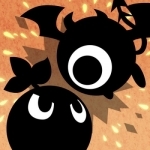
Shadow Land - Endless Tap
Games, Entertainment and Stickers
App
One day, the world suddenly lost its colour… All the colour in the world was taken by a monster...

SmartScan Express
Business and Productivity
App
SmartScan Express is a simple, fast solution to scan, crop, edit, save, e-mail your paperwork -...
